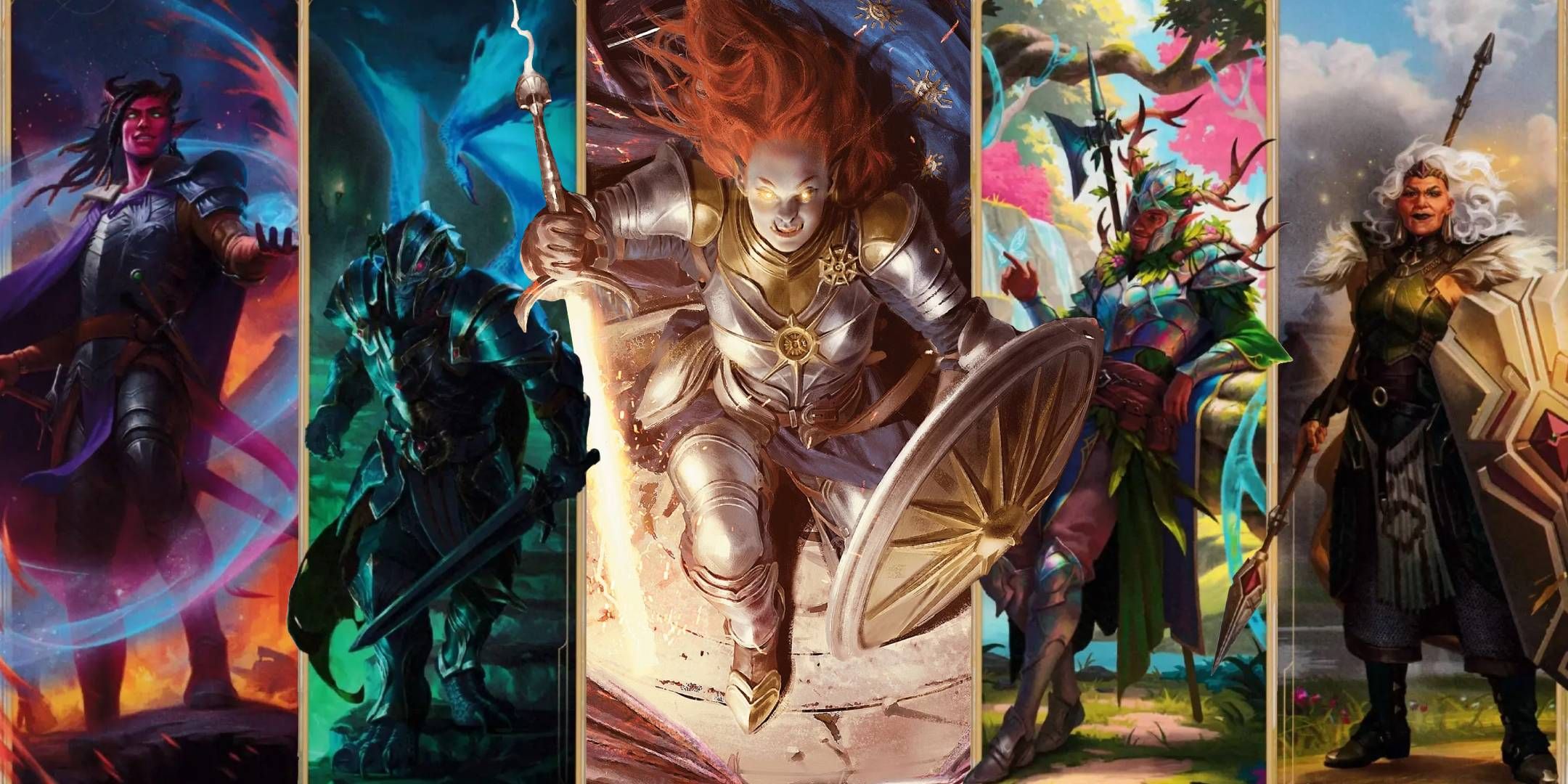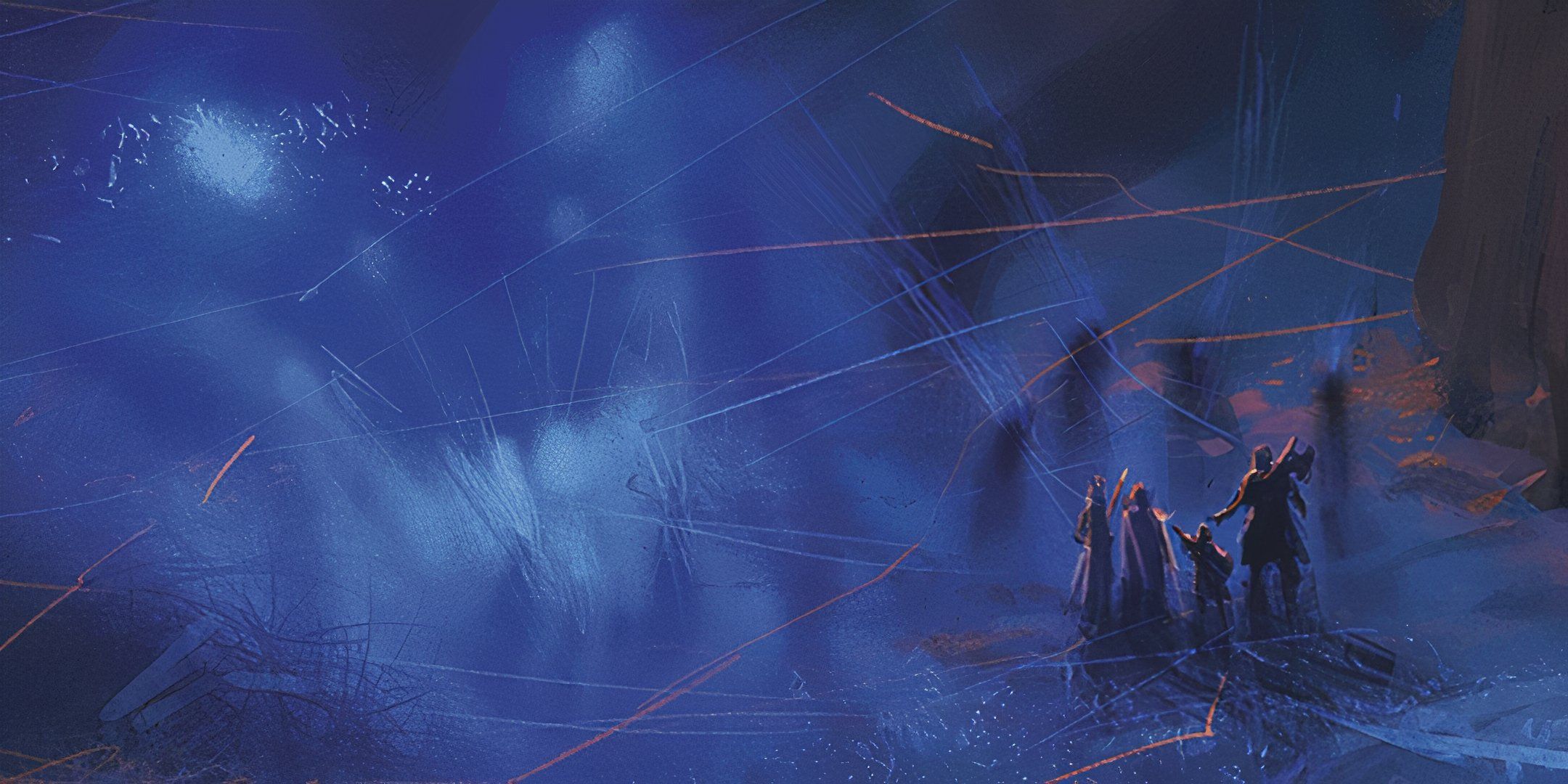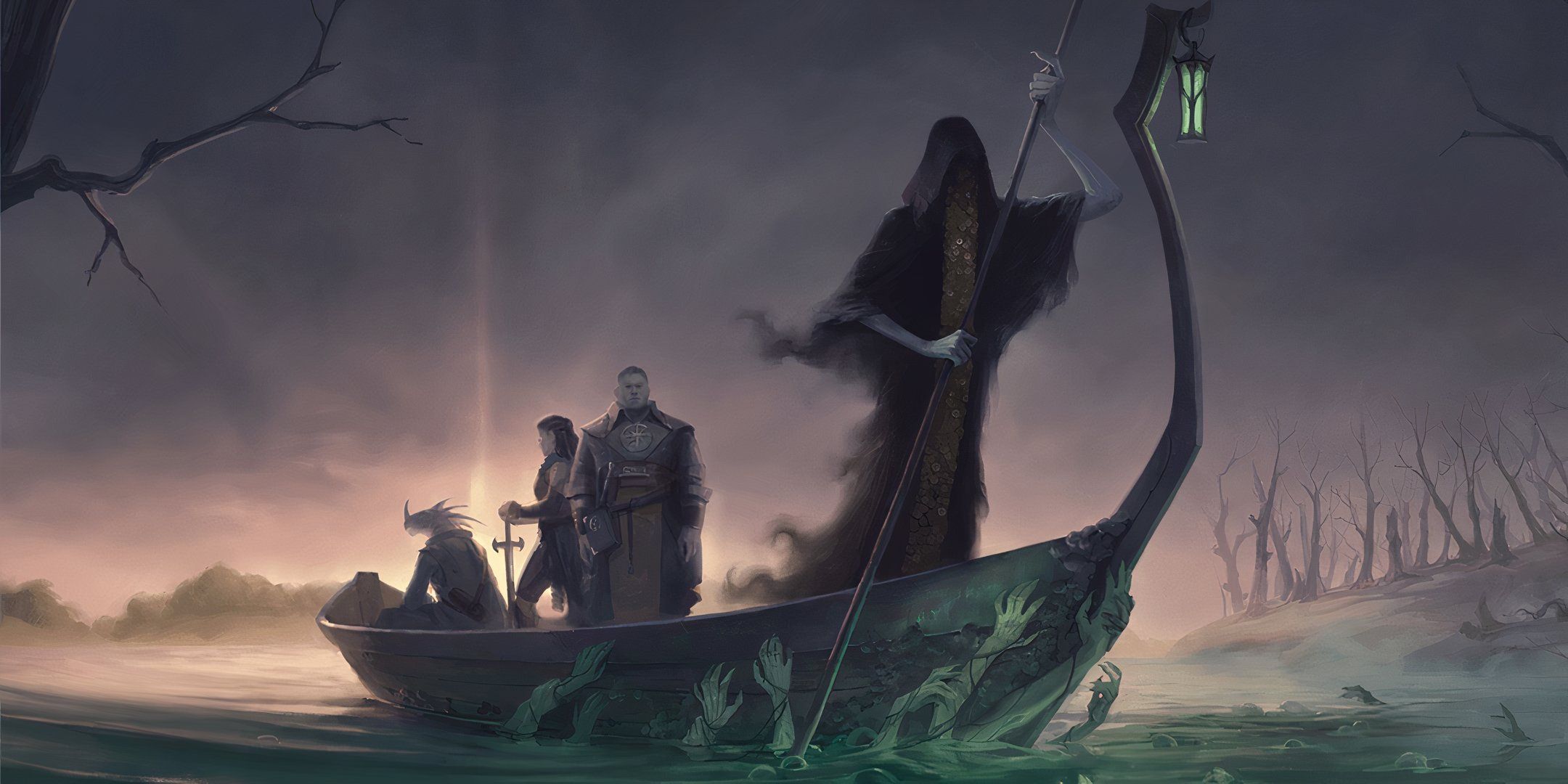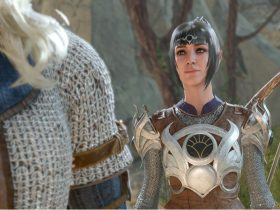Creating an oathbreaker paladin can be one of the most rewarding character builds in Dungeons & Dragons. And picking an almighty god with the right flare for your oathbreaker paladin is especially important. But, where should you start to look in the wide pantheons of D&D?

Related
Dungeons & Dragons: 14 Feats That Increase Your Charisma
These feats will also increase your charisma in D&D
Whether you intend to take the oathbreaker subclass, or temporarily forsake your current oath, there are plenty of D&D deities for you to choose from. Just make sure you talk to your DM about which gods are present in their pantheon. If they are, any of these maligned gods could be well suited to your oathbreaker.
Some DM’s prefer not to have the oathbreaker paladin subclass available in their campaign. If you are still interested in the narrative options offered to an oathbreaker, work with your DM to explore how your paladin’s choice to forsake their oath might change or alter their abilities, while still maintaining your original subclass.
10 Syrul Oathbreaker
|
Sigil |
Followers |
|---|---|
|
Forked Tongue |
Liars, Charlatans, Betrayers |
To start with perhaps the most obvious, Syrul Oathbreaker is an excellent choice for any deviously-aligned paladin. Her sigil is a forked tongue, and for good reason. Her lies and deceit are well known to those who choose to worship her.
As part of Greyhawk’s pantheon of gods, Syrul’s followers are often associated with the Scarlet Order, a devious faction within the city’s gates. Creating a paladin that is perhaps affiliated with Syrul and this nefarious order of assassins can lay the stage for a treacherous and sometimes untruthful character that wields deceit like a sword.
9 Erythnul, The Many
|
Sigil |
Followers |
|---|---|
|
Blood Drop |
Thieves, Berserkers, Soldiers |
Known for bloodlust and violence, Erythnul, the Many is a vile and wicked god also based in the Greyhawk pantheon. Worshipers of Erythnul believe that spilled blood on the battlefield grants their deity his power. He is often depicted wielding a mace and hails from the chaotic Outer Plane of Pandemonium.
For paladins with a militaristic background or backstory, Erythnul can be a great god of choice for worship. Soldiers who believe that power comes from the strength of swords and shields rather than words will certainly find plenty of dogmatic flavor in this bloodthirsty god. If you want to create a combat-focused paladin, Erythnul should provide plenty of roleplay justification to do just that.
8 Kelemvor, God Of The Dead
|
Sigil |
Followers |
|---|---|
|
Skeletal Arm Holding Scales |
Priests, Common folk |
A classic D&D deity if ever there was one, Kelemvor is the traditional god of the dead in the Forgotten Realms setting. His sigil is a skeletal arm holding a set of scales. As such, he weighs the balance of life and death and guards the barrier between the living world and the next.

Related
Dungeons & Dragons: 10 Best Campaign Ideas Using the Outer Planes
The Outer Planes are a vast area with tons of potential. Here are a few things you can do within its vastness for your campaign.
While many classic paladin builds serve the power of life, worshiping Kelemvor as an oathbreaker paladin can prove to be an interesting roleplay challenge. Kelemvor is not necessarily evil but rather a servant of the natural order of things. Forsaking an oath to uphold life, and instead promising to uphold the power of death, offers a complex dimension to any roleplay-focused paladin player.
7 Hextor, Scourge Of Battle
|
Sigil |
Followers |
|---|---|
|
Six down-pointing arrows in a fan |
Soldiers, Tyrants |
If your paladin is facing a crisis of faith in the natural good of the world, consider Hextor as an oathbreaker deity of choice. Part of Hextor’s dogma is that mercilessness and cruelty are necessary aspects of life. They should not be feared, but rather, respected.
There are many religious-military factions from various versions of the Greyhawk campaign setting (of which Hextor is a part of) that worship the Scourge of Battle. Homebrewing a theocratic military order for your paladin to be a part of can be a great jumping-off point in creating your paladin build. It’s also worth considering whether your paladin previously came from a more peace-loving order of worship, and how they have been pushed toward Hextor instead.
6 Incabulos, The Black Rider
|
Sigil |
Followers |
|---|---|
|
Reptilian Eye within a Horizontal Diamond |
Necromancers |
Often manifesting as a deformed figure with skeletal hands, Incabulos is a deeply sinister deity. Oathbreakers who seek to inflict sickness and plague on their enemies and reserve their healing only for their most trusted allies should consider this deity for their build. Incabulos delights in contagions and other ailments.
If you plan to use previous Fifth Edition D&D rules and play the oathbreaker subclass proper, the expanded subclass spell list will help flavor a paladin of Incabulos perfectly with spells like Blight and Contagion at your disposal. If you’re playing with 2024 Player’s Handbook rules, consider taking an Origin Feat like Magic Initate to flesh out your spell list. Also ask your DM about magic items that might allow your paladin to inflict sickness on others.
5 Nerull, The Reaper
|
Sigil |
Followers |
|---|---|
|
Skull with a scythe |
Murderers, Necromancers |
Nerull is a favorite god of death-loving necromancers and other magic-users who seek to alter the barrier between life and death. Feared by most common folk, Nerull’s followers believe that only murder will slake their god’s thirst for blood. Nerull is also said to dwell in the prison plane of Carceri, which can prove an interesting locale for higher-level players to visit.

Related
Dungeons & Dragons: Best Subclass Of Every Class
While there are a ton of subclasses available in D&D, we list the best for each class option.
To flavor a paladin build to Nerull, consider giving your healing spells additional effects. Work with your DM to determine if a Cure Wounds spell performed by your paladin of Nerull temporarily reduces maximum hit points. Or alternatively, you can simply add flare to your spells by having your healing magic take on a darker aura or tone.
4 Shar
|
Sigil |
Followers |
|---|---|
|
Black Disk with a Purple Border |
Betrayers, Those Grieving Loss |
Likely familiar to any fans of Baldur’s Gate 3, Shar is often known as the Dark Traitor or Mistress of the Night. Her worshipers favor trickery and deceit above all else. If your campaign takes place in Faerun, Shar is an excellent choice from this pantheon.
Shar’s core motif is darkness. When building a paladin of Shar, consider if your paladin previously worshipped a deity like Pelor, whose primary theme is light and goodness. This can create an interesting contrast as you decide to break your oath in favor of a new one.
3 Vecna, The Whispered One
|
Sigil |
Followers |
|---|---|
|
An Eye in the Palm of a Left Hand |
Necromancers, Undead |
Longtime fans of Critical Role will certainly remember Vecna. Vecna was previously a mortal, but attained godhood and is now one of the darkest and most mysterious figures in the larger D&D realms. Followers of Vecna crave arcane knowledge above all else, and oftentimes the ability to cheat death.
If your paladin is frustrated with a mysterious, benevolent god who refuses to give answers or speak directly, consider Vecna as your oathbreaker deity. Vecna often makes promises to his worshipers. And giving your DM the chance to roleplay as one of the most dastardly figures in the canon will likely be well worth the effort.
2 Cyric, God Of Lies
|
Sigil |
Followers |
|---|---|
|
White Jawless Skull |
Traitors, Thieves, Barbarians |
Another deceitful god from the Forgotten Realms pantheon, Cyric’s followers are some of the most devious. Marked by a sigil with a skull sitting in the center of a dark sun, Cyric feeds off of intrigue and illusion. His designs seek to turn lifelong friends into enemies, or just rulers into tyrants.

Related
Dungeons & Dragons: How To Build A Paladin
We swore an oath to be the best resource on the matter.
Players who are interested in roleplay-heavy campaigns should consider Cyric for their oathbreaker paladin. If your build features a high Charisma stat block, roleplaying a deceitful worshiper of Cyric can prove really engaging and fun. This is particularly so if your campaign is set in a dense population center or is driven by palace intrigue.
1 Bhaal, God Of Murder
|
Sigil |
Followers |
|---|---|
|
Skull surrounded by Ring of Bloody Droplets |
Assassins, Compulsive Murderers |
Another classic deity known widely across the pantheons, Bhaal craves murder and death above all else. Assassins who work in the shadows favor Bhaal as well. After all, a knife in the back is safer than a sword through the chest.
If you or your player has recently committed a murder in a campaign, perhaps even unjustly, consider using Bhaal to tempt your paladin to break their oath. This can create a really unique roleplay moment for you or your player. You can also homebrew your build and bring in the Touch of Death channel divinity feature from the original Death Domain subclass in Fifth Edition, which adds necrotic damage to weapon attacks.

Dungeons and Dragons
- Original Release Date
- 1974-00-00
- Designer
- E. Gary Gygax , Dave Arneson
- Player Count
- 2+






















Leave a Reply